Auctions
Presto Change-O! Illusionist Ricky Jay’s Collection of Wondrous Ephemera Makes $3.8 Million Magically Appear for Sotheby’s
A majority of buyers were new to the house, drawn by unusual material and approachable prices.
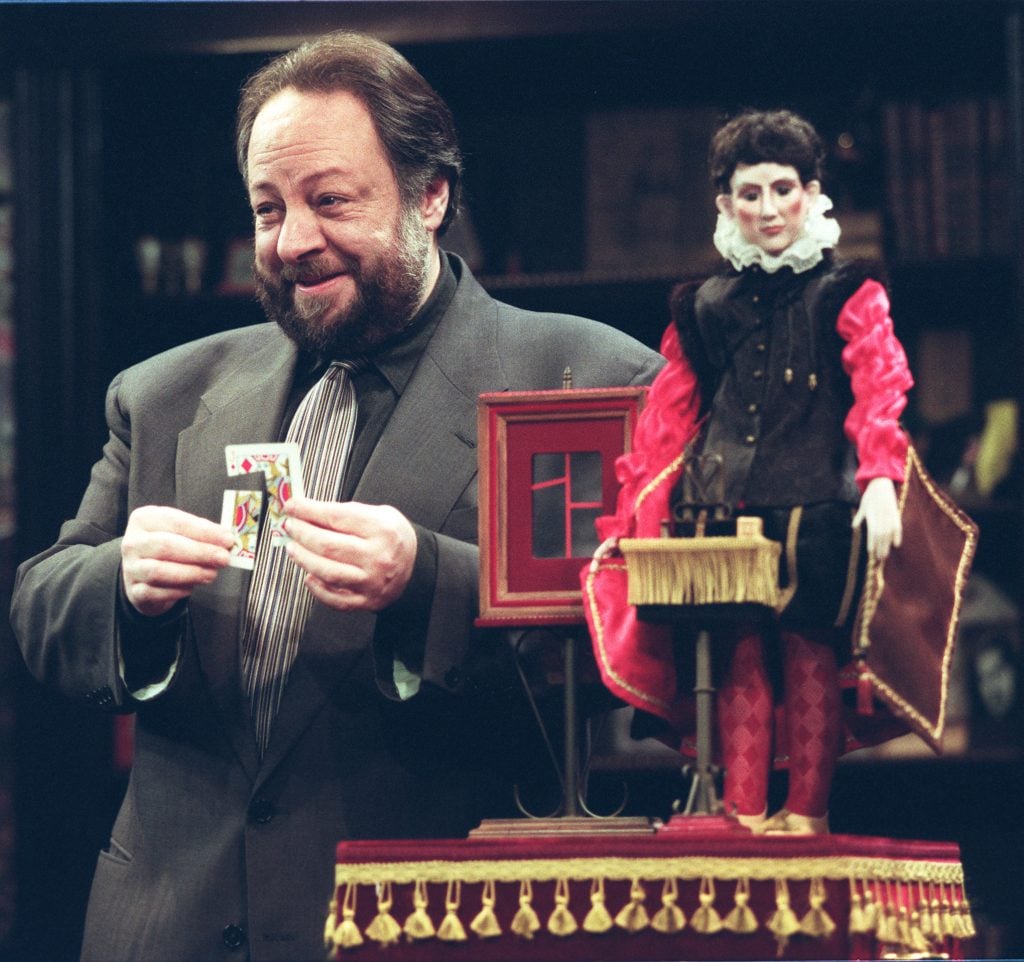
A majority of buyers were new to the house, drawn by unusual material and approachable prices.

Katie White

Now you see it, now you don’t: Such was the spirit of an epic, 634-lot, two-day auction of the famed late magician Ricky Jay’s collection of ephemera at Sotheby’s New York this week. The take totaled $3.8 million, with an impressive sell-through rate of 94%, and topped the presale high estimate of $3.2 million.
Made up of antique books, broadsides, manuscripts, vintage posters, and various other esoterica, the sprawling collection offered glimpses into a kaleidoscopic world of strongmen, sideshow acts, contortionists, occultists, and magicians, with objects dating from the 17th century to today.
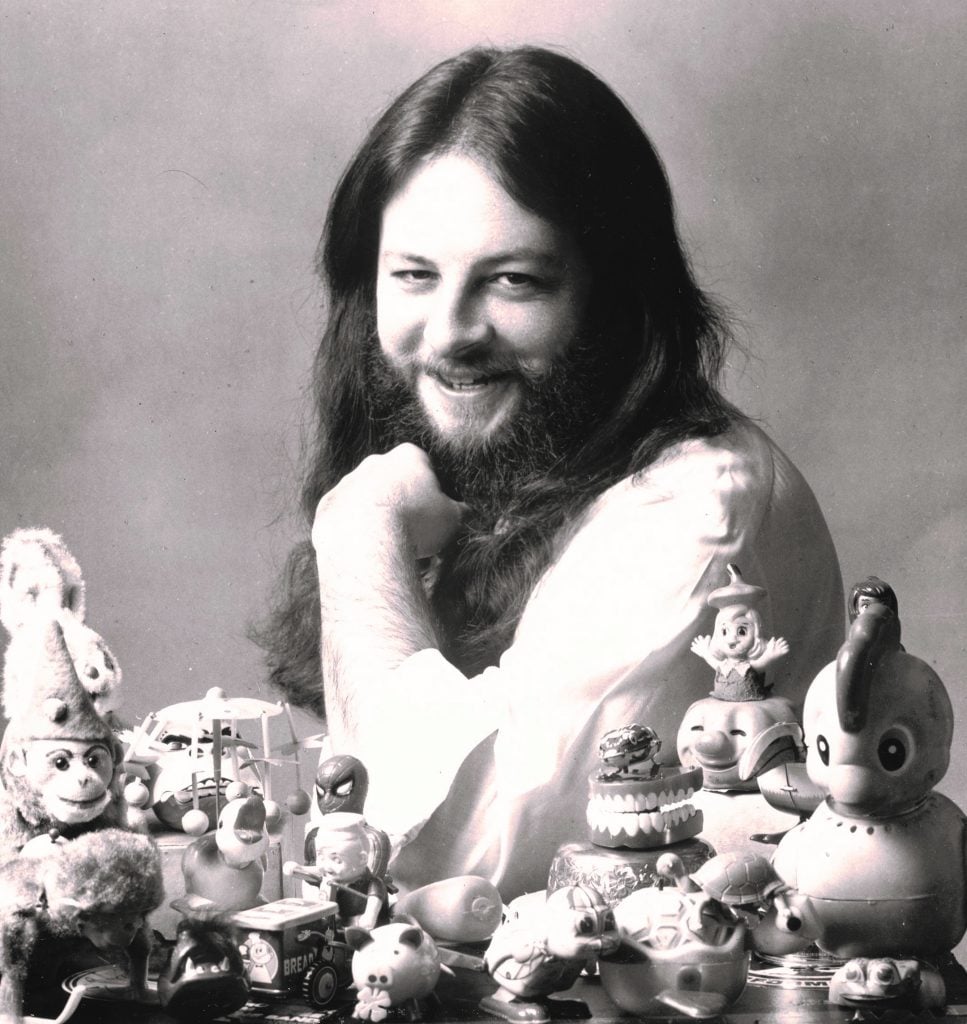
Ricky Jay with objects from his collection. Courtesy of Sotheby’s.
Despite the long sessions, with auctioneers taking turns over both days, interest was brisk and steady, with the majority of the lots snapped up well within their estimates. The singular material and price points starting in the hundreds of dollars attracted a fresh crowd to the auction house, too; 62% of the bidders were new to Sotheby’s.

Alan Wakeling, Ricky Jay’s bespoke automaton. Courtesy of Sotheby’s.
Enthusiastic bursts of bidding added rhythm to the sale, and two highly specific—and unusual—records were set. Neppy, Ricky Jay’s one-of-a-kind automaton, which appeared in hundreds of the magician’s stage performances, hammered down for a final price of $201,600, more than 13 times its $15,000 estimate. (Unless otherwise noted, final prices include auction-house fees; estimates do not.) For those wondering, that is only a world auction record for a contemporary automaton—antique automatons have sold for millions. The signature figure, which was built by Alan Wakeling, was made to perform a silent routine with Ricky Jay, in which a playing card would be torn, handed out to audience members, collected, and then restored by Neppy.
The world’s most famous magician, Harry Houdini, wowed collectors, too, with prices for ephemera related to the artist far outstripping estimates. The exceedingly rare poster Harry Houdini Upside Down in The Water Torture Cell – the most famous, dangerous, and dramatic of all of Houdini’s escapes was sold for $151,200 – more than double its $60,000 high estimate, and established a new record for a poster related to magic.
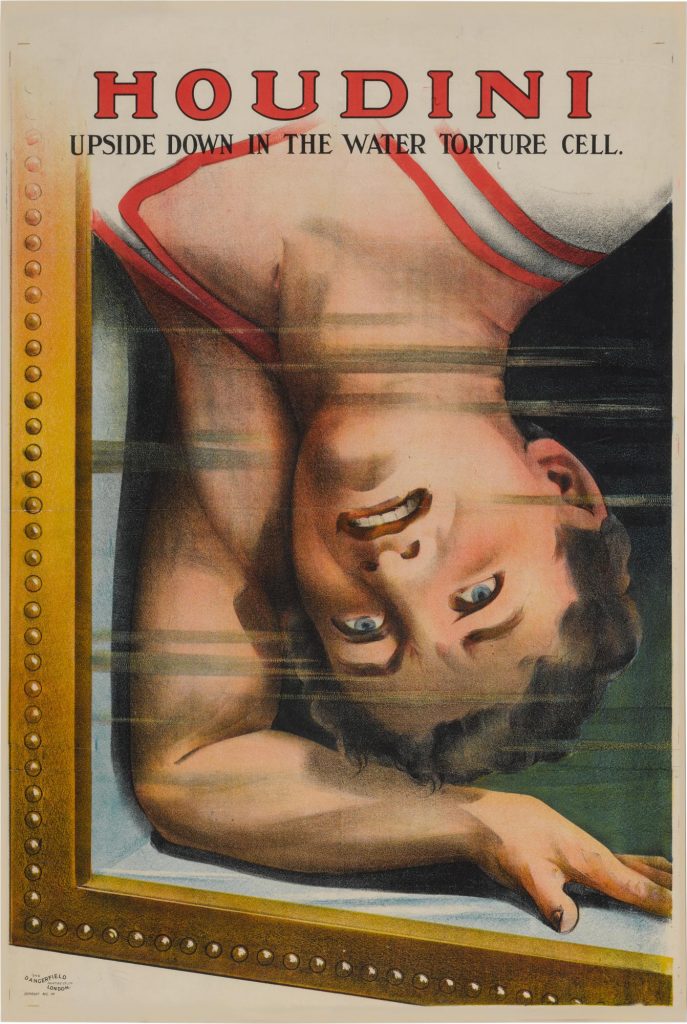
Harry Houdini Upside Down in The Water Torture Cell, designed by Erik Weisz, achieved $151,200, a world auction record for a magic poster.
Two other Houdini posters also surpassed their estimates: Houdini again encounters the German police leapt to $69,300 on a $35,000 high estimate, while Houdini’s Newest Sensation: the Water Torture Cell, reached $52,920 on $15,000 high estimate. Rounding out the Houdini trove, a first edition, presentation copy of Harry Houdini’s The Unmasking of Robert Houdini sold for $25,200, more than 12 times its high estimate.
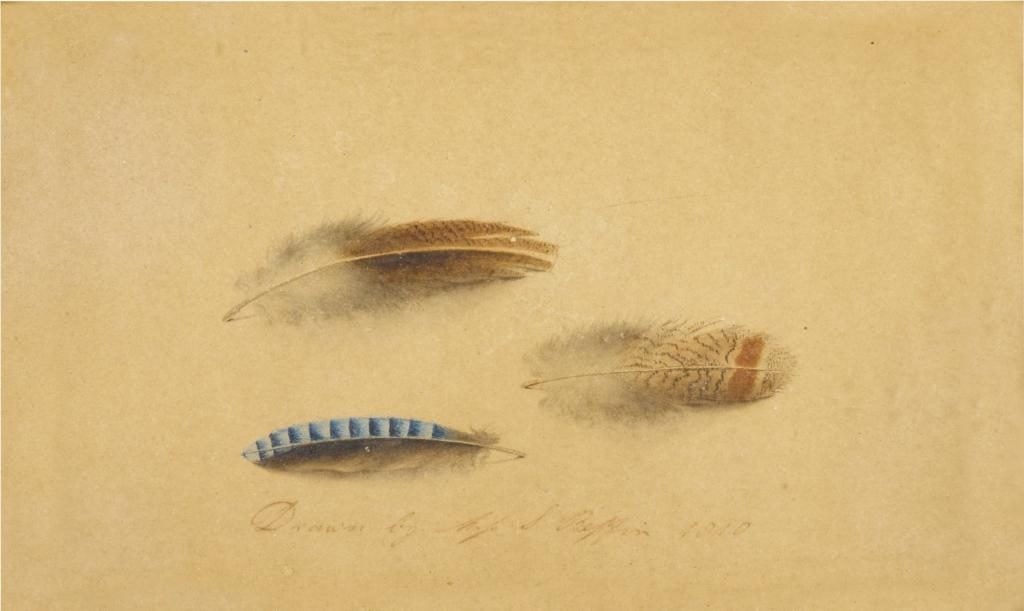
Sarah Beffin, Study of Three Feathers (1810), sold for $21,420, more an 20 times its high estimate.
Collectors were also particularly keen on materials relating to Sarah Beffin, a celebrated Victorian English miniaturist who was born without arms. Two delicate, softly hued paintings of feathers by the artist soared past their estimates. One, Study of Three Feathers, estimated at $800 to $1,000, fetched $21,420; the other, with the same estimate, sold for $18,900. (In 2019, a miniature self-portrait by Beffin estimated at £1,200 to £1,800 sold for £137,500 at Sotheby’s London).
Sotheby’s deemed the magician’s collection the most important cache relating to magic and popular culture to ever come to auction. Jay, who rose to fame as one of the great sleight-of-hand artists of modern times, then as an actor with memorable roles in the HBO series Deadwood and cult-classic films like Boogie Nights and Magnolia, built the collection over decades. Jay often extolled his respect for his forebears in the field and considered his collecting a kind of tribute; when he passed away in 2018 at the age of 72, his holdings stretched into the thousands.
The one-of-a-kind gathering won many admirers. Actor Steve Martin wrote in an essay for Sotheby’s, “Ricky’s legacy reminds us that a collection need not be an amalgamation of stuff, but a scholarly divination of what coheres and what informs, as well as a reminder that the almost unseen can be a valuable and colorful supplement to our human history.”
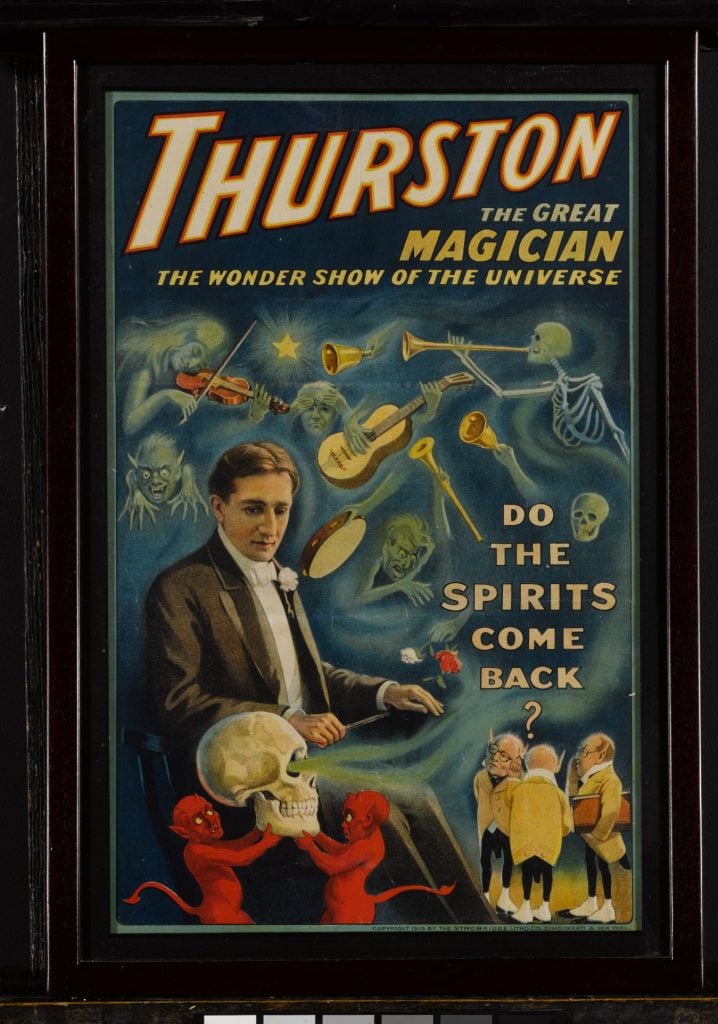
Howard Thurston, Do the Spirits Come Back (1915). Courtesy of Sotheby’s.